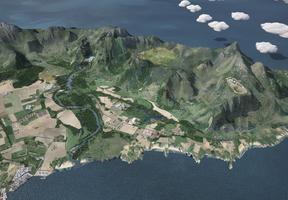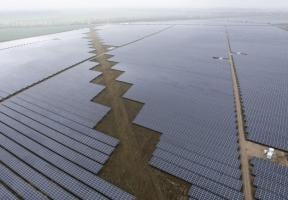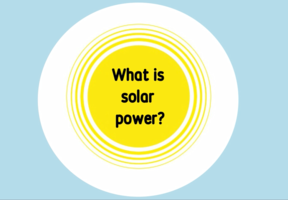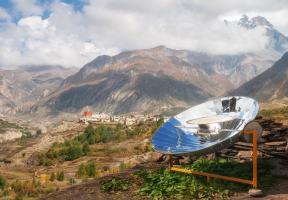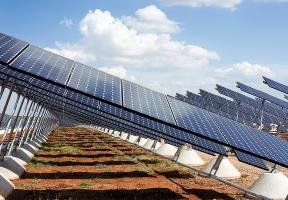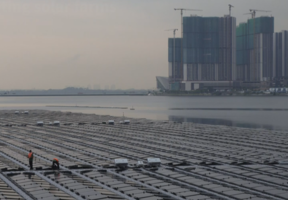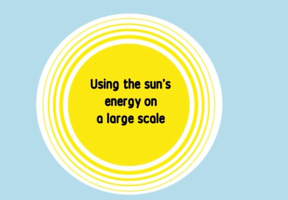Huainan: Largest Floating Solar Farm in the World
Published on 07.11.201810 min read
Following in the steps of Japan, a pioneer in the field, China is developing floating solar photovoltaic (PV) farms on a gigantic scale, thanks to the variety offered by its landscape. The Huainan farm in Anhui province is now operational, with a capacity of 40 megawatts (MW), and another 150 MW facility is planned for the same region by 2019.

© STR / AFP - The floating solar farm in Huainan, China is made up of 160,000 panels, attached to each other in a huge mosaic structure.
The Huainan site's 160,000 solar panels were installed in 2017 by Chinese company Sungrow over a huge surface of water covering a former mine. Spanning 800,000 square meters– the equivalent of 110 football fields – the farm does not take up land that would otherwise be used for farms, manufacturing or tourism, and the highly mineralized water is unfit for irrigation purposes.
The panels are set up a few centimeters above the water on one-meter-long rectangular plastic boards, which are attached to each other in a vast modular patchwork. The whole structure is secured to the bed of the water body to prevent it drifting away with the wind. Developers jokingly refer to this technology as "floatovoltaics".
At the beginning of 2018, some 60 floating solar farms of over 1 MW had been installed around the world. Their combined capacity is still very small, totaling less than 200 MW (the equivalent of a large land-based solar farm – enough to provide energy to around 200,000 people). However, this figure has more than doubled over the course of a year.1 Japan, where farm irrigation reservoirs are plentiful and land is expensive, naturally became a pioneer in floating solar technology and is still leading the industry. Provided the water is calm, the farms can be built on sites of various sizes, such as impoundments, quarry lakes, farm irrigation and industrial water reservoirs, water treatment facilities and flood plains.
Since the surface areas of water bodies are often quite small, the capacity of floating farms is limited. The record-breaking Huainan site (40 MW) pales in comparison to large land-based farms in China or India, which can exceed 1,000 MW.
But promoters of floating solar technology contend that it has a number of other advantages:
- The surrounding water helps prevent the photovoltaic cells from overheating, which improves their efficiency. In addition, the panels often feature collectors on both sides, meaning they can also pick up sunlight reflected back off the water.
- Although they generally cost more to install than land-based farms, this is offset by the fact that the surface does not need to be leveled.
- As the technology was originally designed with the Japanese archipelago in mind, it is resistant to the cyclones that occur frequently in the area. The structures are made of the same high-density polyethylene used for buoys and floats at sea.
However, the environmental impacts are still up for debate. While floating solar farms release no pollution, limit water evaporation and help prevent algal blooms, some environmental groups believe that if too much of the water's surface is covered by solar panels, aquatic life could suffer as a result.
Floating Solar Around the World
Japan has nearly 50 floating solar facilities of more than 1 MW and plans to install several dozen more.The country’s largest farm (13.7 MW) was opened in March 2018 in Chiba, near Tokyo, where it supplements the output of the hydroelectric dam on the same site. Ciel et Terre2, a small French company based in Lille, has been closely involved in the industry since 2006 through its partnership with Japan’s Kyocera TCL Solar.
India, home to a huge number of irrigation reservoirs (36,000 in the state of Karnataka alone), has announced an ambitious floating solar program supported by the public authorities. Australia has also started to move into the market.
However, apart from the United Kingdom, which has two of the world's ten largest floating solar farms (the Queen Elizabeth Reservoir near London and the Godley Reservoir near Manchester), European countries such as Belgium, Denmark, Italy and Portugal have so far opted for sites with capacities of less than 1 MW. In France, discussions have been ongoing for several years for an ambitious project in a former aggregates quarry in Piolenc, Vaucluse. If it goes ahead, the floating solar farm should be ready in 2019. In the Alsace region, a small site on a lake in the Strasbourg suburb of Illkirch-Graffenstaden is being finalized for use by the local authorities, but is facing opposition from environmental activists.
Sources:


